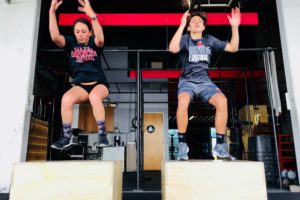
We are all likely to have back pain at some point in our lives. It can be scary, annoying, and interfere with our daily lives if we let it. Below are some common mistakes that you might not know can make your back pain flare up. Pay attention to the following and see if you can make some positive moves toward fixing them!
1. Being inactive!
This one is two-fold:
- 1) Being inactive is a risk factor for low back pain. Inactivity results in a host of health problems from cardiovascular issues to endocrine issues to musculoskeletal issues such as weakness. Unfortunately, muscular weakness can result in a higher risk for injury during daily activities since you’re living closer to your 1 rep max than somebody who regularly participates in resistance training.
- 2) Similarly, inactivity impacts an already flared up back because when you’re avoiding movement, your muscles can stiffen up and be MORE sensitive to movement when you get going again.
If you have back pain, try to continue your activities as much as possible, including working out! Modify movements as you need to, but movement is medicine!
2. Not managing your stress well.
A recent study looked at factors that predicted low back flare ups. Perhaps unsurprisingly, stress and depression were significantly associated with low back flare up risk, while physical activities were not (except for prolonged sitting, which we can probably agree doesn’t count as a physical activity). Further, depression is also associated with increased severity and frequency of low back flare ups, so give yourself some love and take care of your mental health to make your physical health better!
Even more exciting, was that the study also showed that participation in physical therapy is a deterrent for low back flare ups! PERFECT! Physical therapy at Sports Performance not only includes exercise, but also techniques to manage stress better to prevent back pain flare ups!
3. Lifting more weight than you are used to in a position you are not used to.
Human bodies are made of incredibly resilient and adaptive structures that can handle hundreds of pounds of forces as long as they are adequately trained to do so. The best example of this is that many people complain of low back flare-ups when they feel their back round in a deadlift, or they performed a weird twisting movement with their back. In these scenarios, the problem wasn’t the actual movement that caused the flareup: the problem was that most deadlifters train their backs to be strong in a straight position, and most people don’t train their backs to twist under bodyweight loads. This results in a lesser ability to manage forces in those positions (even your bodyweight), so the risk for injury (muscle strain) is greater.
In an extreme example, if you had ALWAYS lifted with your back slightly rounded, and you had built it up slowly enough over time, your back would probably have no problems when you round in a deadlift. Similarly, if you train up (strengthen) your back to rotate with some weight, you will be less likely to tweak it when you are bending and twisting to reach something that fell behind the couch or between your driver’s seat and center console in the car (the black hole of lost items).
4. Being overweight (High BMI)
Unfortunately, low back pain is more prevalent in people who have a higher BMI, with increases in prevalence as the BMI gets higher. Fortunately, BMI is not a forever number: you can change it with lifestyle changes such as diet and exercise. The added bonus is that those lifestyle changes will also decrease your other risk factors for low back pain (such as inactivity and stress). If you need some direction on how to incorporate these changes into your life, Sports Performance is more than happy to help!
Bottom Line: low back pain is likely to affect all of us at some point. The more aware we are of the things that can cause flare ups, the better we can address them and decrease the amount of pain and disability that accompanies back pain. If you’re struggling with back pain, we’ll help you reduce pain, move more confidently, and get back to the active life you enjoy!
References
Su CA, Kusin DJ, Li SQ, Ahn UM, Ahn NU.The Association Between Body Mass Index and the Prevalence, Severity, and Frequency of Low Back Pain: Data From the Osteoarthritis Initiative. Spine 2018 Jun 15;43(12):848-852.
Suri P, Rainville de Schepper E, Martha Hartigan C, Hunter DJ. Do Physical Activities Trigger Flare-ups During an Acute Low Back Pain Episode?: A Longitudinal Case-Crossover Feasibility Study. Spine 2018 Mar 15;43(6):427-433.
As always, we hope this helps! If you have any questions or if you would like to read about certain topics, feel free to send us an email at TeamSP@SportsPerformancePT.com.
-Dr. Marissa Rescott, PT, DPT, CF-L1

STAY CONNECTED
Instagram: CLICK HERE
Facebook: CLICK HERE
YouTube: CLICK HERE
Podcast: CLICK HERE
TUNE IN TO OUR PODCAST












